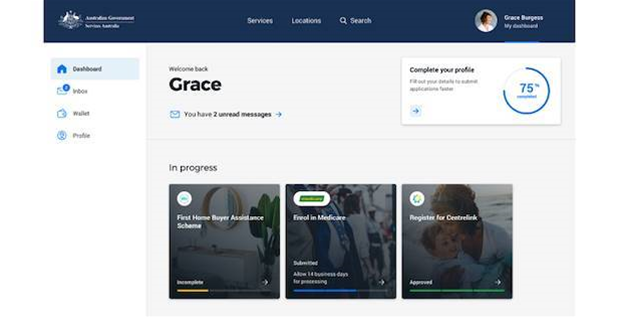The federal government will integrate its digital identity service with a working beta of the social media-inspired government digital services platform that will replace myGov before the end of the year.

Government services minister Stuart Robert revealed the timeline for the planned integration during his keynote address at the Digital Transformation Agency’s digital Summit on Tuesday.
He said the digital ID functionality would be rolled out in time for the end of the year as part of a third release of the myGov beta platform, which will also bring other additional improvements.
"We expect another release before the end of the year, which will bring in additional improvements and the integration of digital identity," he said.
The planned integration means the myGov beta platform, first launched in June and updated in September, could work with the myGovID digital identity credential before myGov itself.
As reported by iTnews in July, myGov’s integration has proven to be more complex than first anticipated, with the DTA forced to delay the rollout after identifying problems during a pilot in May.
No update has been provided on the DTA’s progress with the myGov integration since, although it is understood that work is continuing.
The government has provided a further $256.6 million in this year’s budget to continue developing the broader digital identity scheme, which includes the integration of myGovID with myGov.
Any integration of myGovID with the myGov beta or myGov will see the credential intially work like a digital equivalent of the 100 point ID check, without any facial recognition or proof-of-life test.
A public trial of the ‘liveness’ detection mechanism – which ensures a higher level of identity proofing for access to more confidential services – is not expected to occur before September 2021.
Ahead of that trial, the government is planning to introduce legislation that will set ground rules for public and private sector involvement in the decentralised digital identity ecosystem.
Robert also used his keynote to provide additional details on the government’s vision for the myGov beta platform, which consulting giant Deloitte has developed at a cost of $28 million.
“Our vision for myGov is to make it a true front door for government and deliver important functionality like a government wallet, a home for trusted correspondence [and] a video appointment service,” he said.
Government-wide architecture review
Elsewhere in his keynote, Robert said the government is planning to deliver a draft government business architecture sometime next year to better co-ordinate IT investment.
The architecture – which a taskforce led by the DTA was tasked with developing last December – will be the first “holistic government business model” created by government.
Robert said the government business model will be supported by “architecture, platforms and a framework to drive and orchestrate cross-agency services”.
“This will give the government the ability to identity strategic capabilities as well as gaps and make informed investment decision across the entire technology portfolio,” he said.
The government has already begun to source reusable platforms as part of this architectural approach, including a new government-wide permissions platform.
But it now looking to “streamline” the process of sourcing and supplying platform capabilities for both agencies and industry through the creation of a Platforms Marketplace.
“The creation of a Platforms Marketplace will provide guided procurement pathways and digital sourcing advice to deliver platforms that are scalable, reusable and better value for money,” Robert said.
“Agencies seeking a solution will be able to assess existing government platforms for reuse and ring providers together in a way that encourages local participation, flexibility, collaboration and innovation.”
Robert has also asked the DTA to refresh the government’s digital transformation strategy, which is now two years old.
The update will take into the account the changes that have occurred over the past 12 months as a result of the pandemic.
“This strategy update will be focused on delivering the services Australians rely on as soon as possible, to help those most in need and to support the nation’s economic recovery,” he said.


_(20).jpg&h=140&w=231&c=1&s=0)







 iTnews Executive Retreat - Security Leaders Edition
iTnews Executive Retreat - Security Leaders Edition












_(1).jpg&h=140&w=231&c=1&s=0)



